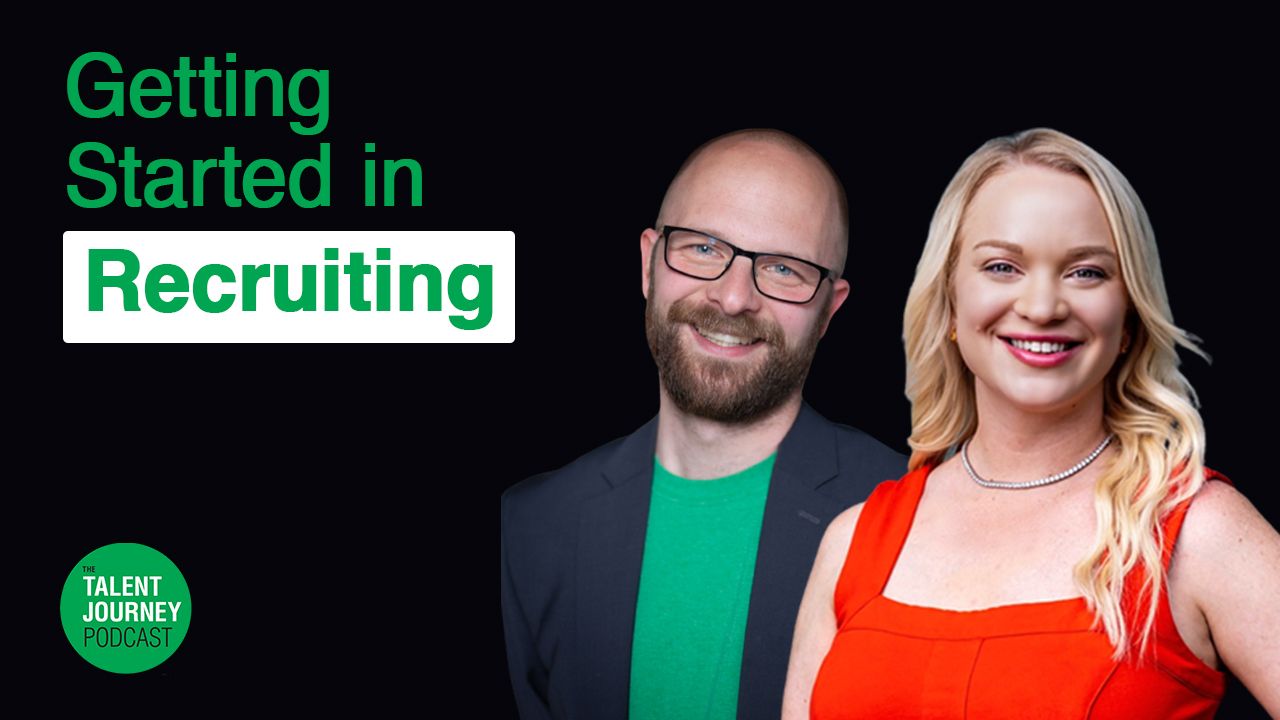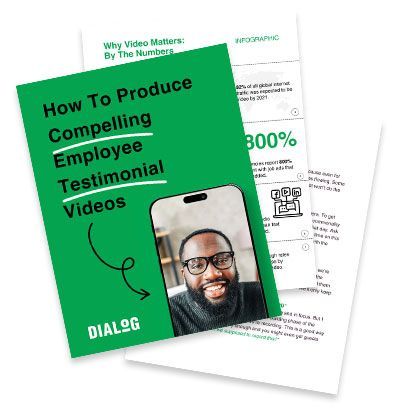Everything's different now: How to advertise jobs in the post-COVID era

Let’s face it: you’ve been feeling the pain of "not-enough-people" for a while. And we know it’s not going to get better anytime soon. Finding the right talent seems more difficult than ever—especially for blue collar companies.
And it's a challenge that looks like it’ll become even more difficult as more and more baby boomers retire and leave behind millions of unfilled jobs without enough people to fill them.
So why isn't hiring easier? It's simple—everyone's using outdated recruiting techniques that come from a time when recruiting was as simple as putting out a job ad and getting a number of decent applicants.
But now that we’re in an employee market (i.e. more jobs than people), employees get to pick and choose who they want to work for.
Which means that if you’re not out there selling the job, you're not getting enough applications. And certainly not qualified applicants.
When the number of applicants for any given job opening is lower than expected, there could be one (or more) common reasons you are disappointed in your candidate pool.
However, there are simple solutions if you’re willing to roll up your sleeves and put some effort into proactive recruiting.
Here are
5 mistakes
I see HR teams making all the time—and how to fix them.
Mistake #1: Your job application is outdated
Does your company still use the same job application from five years ago? You could be putting your HR team at a huge disadvantage.
Each year brings new advancements that transform companies across all industries—and the way they hire.
But if you still think of your hiring process as a simple "point and click" process, you're not only behind the times—you're making it significantly harder to find quality candidates.
Check the quality of your business' job application, by asking yourself these questions:
- How easy is it to navigate the form?
- How long does the form typically take to complete?
- Are you asking for relevant information or stuff that really doesn't matter (references, cover letter, etc.)?
A simple framework can include name, phone number, desired position, work history, and resume.
And if you’re getting too many junk applications, you can always add qualifying questions to your application later that weed these out.
By updating your HR systems, you'll get more applicants faster. And that includes blue collar workers, who can fill out applications easily and quickly.
One quick tip: try to fill out your own job application. If it takes you more than 5 minutes, you’re going to see your application rates be low no matter what else you try.
Mistake #2: You don’t have a hiring website
Trying to hire without a hiring site is like being an online business that doesn't have a website.
If your business never had a hiring site, you could be losing out on vast numbers of desirable candidates who just want to learn more about you. These are people who may have seen your ad or heard about you and want to scope out the opportunity you’re offering them.
But what exactly
is a hiring site?
This is a website that contains the information people need to know about working for your company.
- Pay and benefits
- Your company size
- Your open positions
- Your company culture (e.g. picture of your team doing fun things at work)
- Your values
- Employee stories
- Frequently asked questions
- Links to social media feeds
- And anything else that matters to your prospective candidates
Ultimately you want to build your whole site with your candidate in mind. Put yourself in your candidate’s shoes. What will they want to know?
If you don’t have a career site, start with a career landing page — a one-page website that gives folks a brief overview of your value as an employer. It doesn’t have to be fancy. I recommend just a few key items such as a recruiting video, employee quotes, photos of your team at work, and a link to view all of your open jobs. Here’s an
example of a career landing page the Dialog team built for one of our clients.
The last thing you want to do is lose out on the best candidates because they come to your website wanting to learn more but can’t get answers they want and click away to a competitor’s site.
Mistake #3: You haven’t made your wages public yet
It's time to bring the wages conversation to the table.
Let’s face it: your wages are easy enough to find out already. Just check out Indeed or Glassdoor and their wages sections, where your employees probably already share this. So why rely on probably outdated information? Give it to them straight from the horse’s mouth.
This may seem like a controversial move, but it is one of the most important ways to attract top-quality candidates. Why?
Top-quality candidates don’t have time to run away applying to jobs where they only find out wages after they apply. That’s a waste of their precious time.
And before you think you have to have the best pay to do this, you don’t.
Plenty of great companies can’t afford the best pay for their people because they’re startups or small businesses. And that’s ok as long as you make this clear. There will be plenty of folks who will be willing to take a pay cut in exchange for being part of a fast-moving, thriving business where they have more ownership compared to the big corporate job where they’ll be stuck in a cubicle all day.
Still unconvinced to make your pay public? Let me ask you one question: how many employees have ghosted you in the last year or more after they found out about the pay? By including pay in your job ads, you’re preventing your HR team from wasting time on candidates who wouldn’t apply in the first place.
Your company gains a beneficial competitive edge because you're putting all your wage info out there for job-seekers. And there’s nothing wrong with being clear and upfront with everything you can offer candidates, including pay.
Mistake #4: You don’t have an Employer Value Proposition (EVP)
There are dozens of brands of cereal that are delicious. So why does Kellogg’s cost so much more yet still remain the market leader? Because they’ve built trust in their brand over time. People know that Kellogg’s reputation prevents them from making a bad choice in cereal.
If we rely on brands to make decisions about cereal, how much more is this important when it comes to choosing a workplace?
That’s where understanding your value as a company is so important. It’s the cornerstone of the reputation–or brand–that you want to build as an employer.
To build a brand, you first need to summarize what your value is in an Employer Value Proposition, or EVP. An Employer Value Proposition should describe why someone should work for you
beyond the pay.
It can include things like:
- Company culture
- Benefits and perks
- Company purpose (e.g. if you have a product that has an emotional tie-in, such as baby diapers)
- Your “big goal” as a company (e.g. if you’re a startup)
- And many, many more options.
To build your Employer Value Proposition in a way that stays true to who you are as a company while attracting top talent, you need to find what your organization's unique selling points that matter to your current employees, then summarize them in a short statement.
Mistake #5: Your job descriptions are overly complicated
If your job description is too complicated or long, you probably won't get many applicants.
The average job posting is around 400-450 words. But the average blue collar job listing is around
1,500 words.
That's way too much.
Cut, and cut again. And then get rid of any relevant jargon that would make your post confusing or hard to understand.
Any jobs over
2,000
words long simply won't be read by most applicants—so get them under control quickly.
Speak to the needs of your audience and make the job description more like a pitch for why someone should work there than a list of requirements.
Does Finding Talent Feel Harder than Ever?
You're not alone.
In the midst of a perfect storm of an aging workforce, pandemics, and technological change, we're living in a time when everybody with the right qualifications is in demand, but finding them isn't easy.
Get more job applications by showing up and showing off your company, where everybody hangs out these days:
online.
Justin Vajko (vay-koh) is a speaker and award-winning marketer who is passionate about connecting great employers to great employees. Justin has seen too many fantastic companies struggle to recruit efficiently. That's why he and his company Dialog help employers generate more job applications from qualified applicants by building their reputation online using video. Justin lives in Chippewa Falls, Wisconsin with his wife and three kids in their first home where he’s on a steep learning curve wrangling non-working appliances and fixing leaky faucets. Have any tips for how to properly mud drywall? Let Justin know on LinkedIn.




